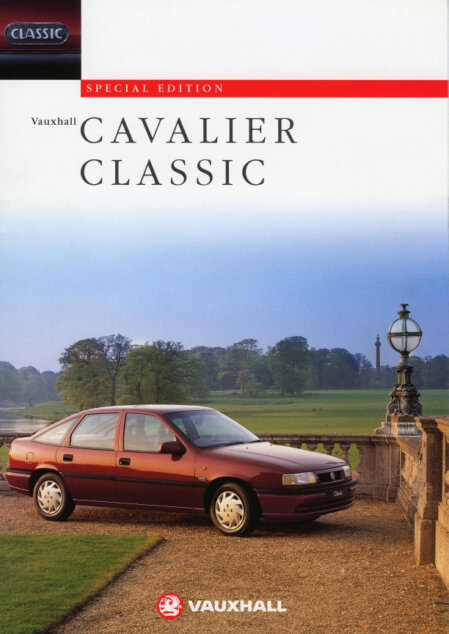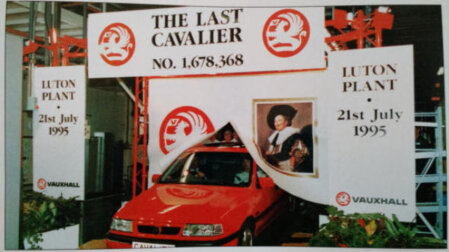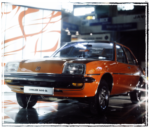Cavalier Mk3
Vauxhall Cavalier Mk3: The Final Chapter of a British Icon
By the mid-1980s, General Motors had begun designing a successor to its European J82-platform models. While GM’s global divisions in the U.S., Australia, and Japan pivoted toward different vehicle strategies, Opel focused on retiring long-standing nameplates—having already replaced the Rekord with the Omega. The new Ascona C replacement would debut as the Vectra in mainland Europe. Vauxhall, however, chose to retain the well-established Cavalier name, due to its strong brand recognition in the UK.
Parallel to this, development commenced on a sleek new coupé that would share its underpinnings with the saloon and hatchback, but adopt its own name and design—ultimately becoming the Calibra.
Launched on 14 October 1988, the third-generation Cavalier was Vauxhall’s version of the Opel Vectra A, offered in saloon and hatchback formats. A dealer preview had taken place earlier on 26 August at The Royal Lancaster Hotel in London, complete with musical entertainment by Bruce Forsyth and his band. No estate model was introduced, as Vauxhall encouraged buyers to consider the Astra or Carlton estates instead. Although estate designs were explored, limited demand—especially in Germany—led to the concept being shelved.
In 1989, the Cavalier’s floorpan formed the basis for the Calibra, the first Vauxhall coupé since the original Cavalier coupé ended production in 1981. The Calibra replaced the Opel Manta and was sold as an Opel in Europe and as a Holden in Australia.
Vauxhall avoided the "Vectra" name for this generation to prevent associations with the corrosion-prone Vauxhall Victor. The Cavalier, by contrast, was a respected nameplate that had revitalised the marque’s image. The Vectra name would only appear with the Mk3’s successor in 1995.
This generation also marked Vauxhall’s return to left-hand-drive exports—its first in 15 years. Branded as Opels across Europe, the rebadged Cavaliers significantly boosted GM’s confidence in its British arm.
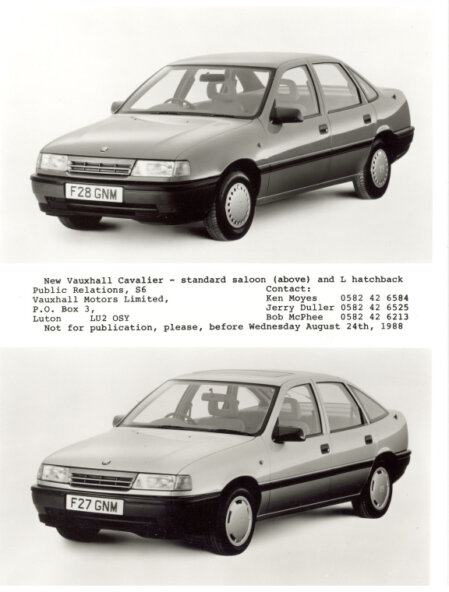
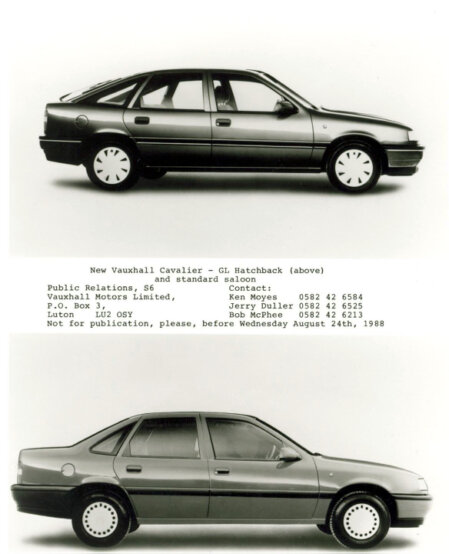
Design Evolution and Mechanical Advancements
Stylistically, the Mk3 Cavalier moved away from the angular appearance of its predecessor, adopting more rounded lines in line with late-80s European trends. It debuted a new 1.4L petrol engine aimed at fuel economy and introduced powerful 2.0L 16-valve engines—known as the “red top” or XE—in the GSi 2000 and later SRi models. Four-wheel drive became available on 2.0i models in both 8-valve and GSi 2000 variants.
Two diesel options were offered: a 1.7L non-turbo delivering 60 hp (45 kW), and an 82 hp (61 kW) Isuzu-built turbodiesel introduced in 1992. Early SRis retained the 2.0L 8-valve engine from the Mk2, producing 130 hp (97 kW) without catalytic conversion.
In 1990, the Cavalier outsold the Ford Sierra for the first time in Britain. It rose to become the UK’s second-best-selling car in 1992—behind only the Ford Escort—and held its lead in the large family car class until the arrival of the Ford Mondeo in 1994.
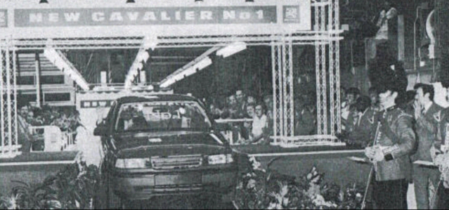
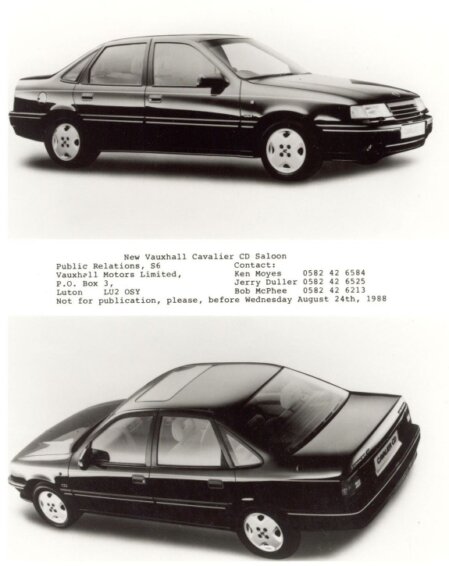
Calibra Coupé: Streamlined Performance
The 1989 Calibra received acclaim for its aerodynamic profile and shared much of its cabin with the Cavalier. With a drag coefficient of just 0.26 on the 8v model, it set a benchmark for production cars for the next decade. Variants included:
- 2.0L 8-valve and 16-valve
- Turbocharged 2.0L
- 2.5L V6 (top speed ~145 mph)
- 2.0L Ecotec 16-valve
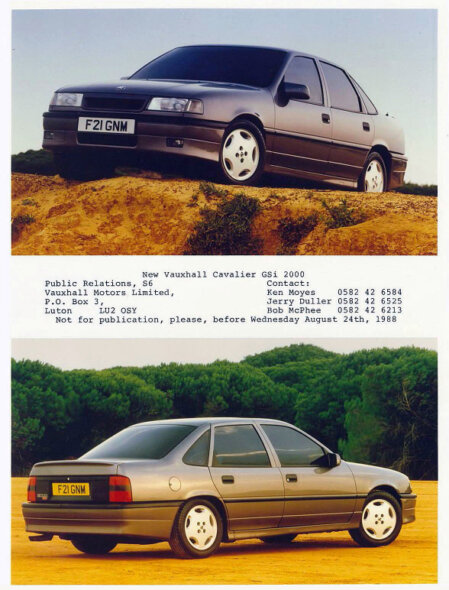
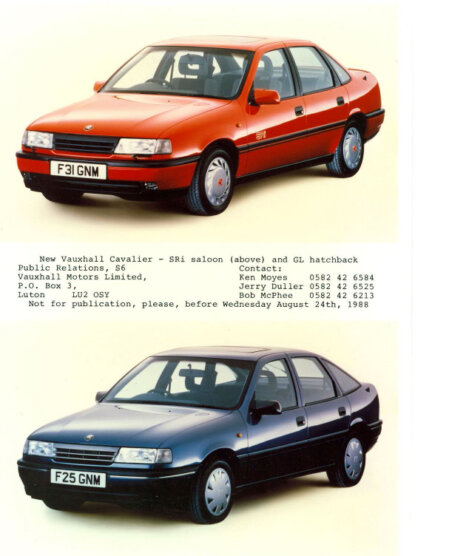
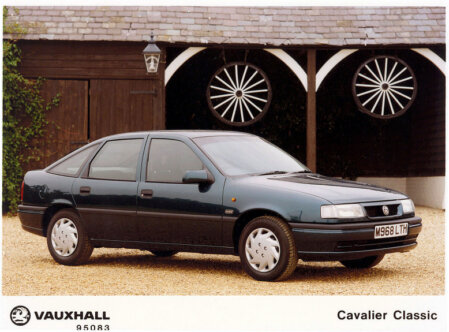
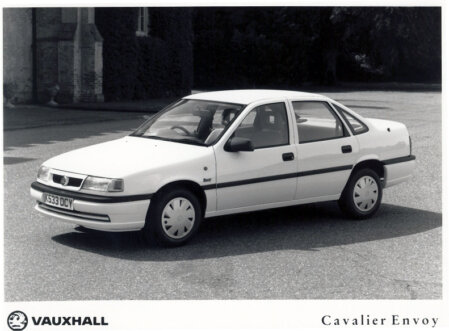
Facelift and Final Refinements (1992–1995)
A significant update arrived in autumn 1992. The 1.4L engine was dropped, and a new 2.5L V6 with 167 bhp (125 kW) was introduced. The GSi 2000 was replaced by the Cavalier Turbo, a four-wheel-drive performance model packing over 200 bhp (150 kW) from a turbocharged 16v engine.
Safety tech took centre stage: the Mk3 was the first in its class to come standard with airbags and anti-lock brakes. Reinforced safety cells, side-impact bars, and front seatbelt pretensioners were standard across the range. A passenger airbag became an option—and eventually a standard feature.
Externally, the car received a refreshed grille, headlights, bumpers, and rear clusters. Interior noise insulation improved on GLS and higher trims. Late in 1994, the efficient 2.0L Ecotec engine replaced both the trusty 8v C20NE and the high-revving 16v “red top,” offering better fuel economy and torque, albeit with reduced output (136 hp vs. 150 hp).
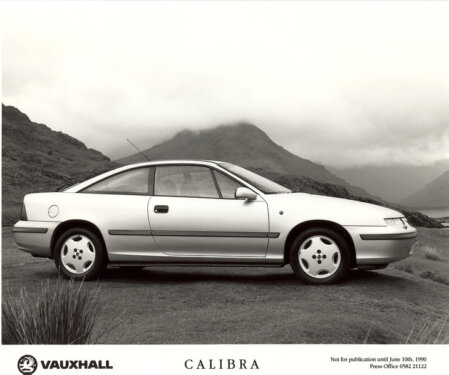
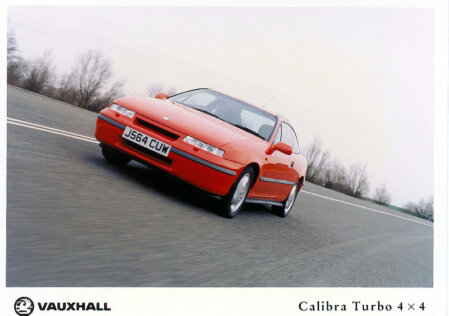
End of the Road
After two decades and three generations, the Cavalier line ended in October 1995. It was succeeded by the Vectra, though residual stock meant new Cavaliers continued to be sold into 1996—with even a rare W-plate registration surfacing in 2000.
Trim Levels
1988–1992 Range:
- Base: 1.4, 1.6 petrol
- L: 1.4–2.0i 8v petrol, 1.7 diesel/turbodiesel
- GL: 1.6–2.0i 8v petrol, 1.7 diesel/turbodiesel
- CD / Diplomat: 2.0i 8v petrol
- 4x4 / SRi: 2.0i 8v petrol (130 bhp)
- GSi: 2.0i 16v petrol
- Concept / Expression: 1.6–1.8i petrol
1992–1995 Range:
- Envoy / LS / GLS: Multiple engine options including 1.6i–2.5 V6 and diesel
- V6 / CD / CDX / Diplomat: 2.0i–2.5 V6 petrol, diesel
- SRi: Variants with C20NE, C20XE, and X20XEV engines
- Cesaro: 1.8i & 2.5 V6
- Turbo: 2.0 16v 4x4 (C20LET, 6-speed)
- Ethos / Expression / Concept: Efficiency and mid-range specials
